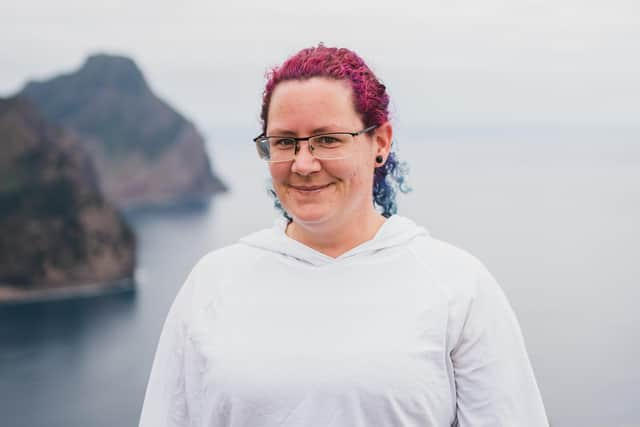Hastings woman travels to work on remote Robinson Crusoe Island
and live on Freeview channel 276
Kay Bromley spent a month on Robinson Crusoe Island, the main island in the remote Juan Fernández Archipelago and national park, 400 miles off the coast of Chile.
She applied for Work for Humankind, a new initiative launched by Lenovo and non-profit organisation, Island Conservation, which saw thousands of applicants from across the world apply to work remotely and volunteer from a far-flung location.
Advertisement
Hide AdAdvertisement
Hide AdKay said: “It was one of the most mind-blowing experiences I’ll ever have. I loved everything about the island and its people.


“The scenery is simply breathtaking. I’ve come away with some new life-long friends on the island. We’re still all in contact on social media and I know that if I returned with my family, my hosts would happily open their homes to us.
“It’s also opened my eyes to just how hard life can be when you’re so remote. I’m a lot more appreciative of our next-day-deliveries now I’ve seen life where a supply boat only comes twice a month.
“I saw the advert on social media and just loved the idea of bringing the benefits of connectivity to such a different place.
Advertisement
Hide AdAdvertisement
Hide Ad“I knew that the project would need someone like me, that can communicate technical concepts at all levels, to be able to remain effective once the project finished.


“I’m passionate about the positive impact that technology can bring, especially when it comes to efficiency and lifestyle benefits, so wanted to see what difference the Lenovo technology would make.
“On top of that was the opportunity to get to experience one of the most biodiverse locations I’d ever get to travel to. I’m so used to travelling to the ‘usual’ tourist destinations that the concept of going somewhere so remote, with so many endemic species just sounded too good to be true. I was also really intrigued, there was very little information online about the Juan Fernandez community themselves.
“I’ve been working remotely since 2018, so I already knew I could easily transfer my working location to somewhere even more remote than usual.”
Advertisement
Hide AdAdvertisement
Hide AdKay spent a week-long quarantine in Santiago before heading to the island via a small six-seater prop plane and then a 30-minute boat ride.
She added: “I worked closely with the Island Municipality to understand some of their communication challenges. This included visits to both the school and hospital. I’ve left them with lists and instructions for the kit they need to purchase, and how to make best use of them.
“One of the biggest issues they have is sharing information. They have a multitude of WhatsApp groups where notices are shared, which is great, but can mean that important news is missed as the message list grows.
“To help them solve this, I created a prototype app for the islanders. The app requires very little data, and can sync as and when the phone is connected to normal mobile data. I’ve currently got a variety of people testing the app from the island and will be having a catch-up call in the next month or so to define the next steps.
Advertisement
Hide AdAdvertisement
Hide Ad“The most impactful change I made though, was the introduction of an AI server that’s now being used by Island Conservation.
“They have camera traps scattered across the island to track the invasive species. When they collect the images, there’s literally thousands of them that have to be filtered through. The new server does a lot of the work automatically, deleting any images that don’t have animals and flagging any that have Coati (the main invasive species they’re trying to tackle).
“I worked with Island Conservation to install the server and train them how to use the software. It’s freed up the onsite workers to spend a lot more time in the field, and enabled them to dynamically target their locations.
“I also found myself helping the islanders with general issues with their computers, everything from bluetooth not working to showing them how to download the Windows updates. This was slightly challenging, given my high-school level Spanish, but thankfully, I had a lot of other volunteers willing to serve as my translators.
Advertisement
Hide AdAdvertisement
Hide Ad“Outside of my technical role, we also helped with some of the more physical work. The islanders meet every other Sunday and head into the wilderness to clear the brambles and eucalyptus trees that are taking over the native species. We joined them, and having an extra 12 people meant we were able to clear a much larger area.”